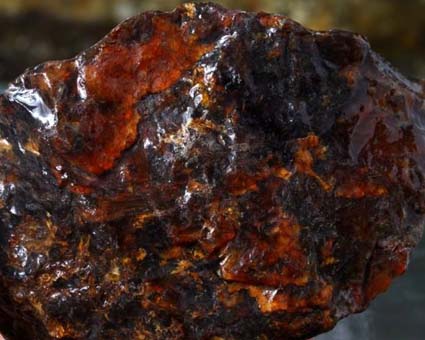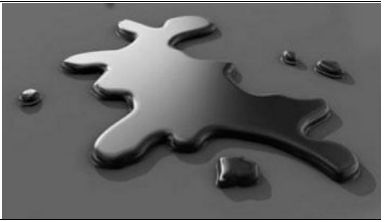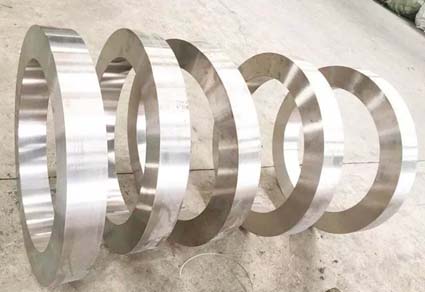Titanium Smelting Method
The raw material for preparing titanium metal is mainly rutile, which contains more than 96% of TiO2.Countries that lack rutile, such as the Soviet Union, use "titanium slag" made of ilmenite, which contains about TiO 20%. Due to the rise in natural rutile, reserves are declining. Countries tend to use ilmenite to make titanium-rich materials, namely high-titanium slag and synthetic rutile.
Titanium was discovered in 1791, but the first time pure titanium was produced in 1910, and the middle experienced more than one hundred years. The reason is: Titanium is very lively at high temperatures and is very easy to combine with oxygen, nitrogen, carbon and other elements. It takes very harsh conditions to extract pure titanium.
Industrially, sulfuric acid is used to decompose ilmenite to prepare titanium dioxide, and titanium dioxide is used to obtain titanium metal. Ground ilmenite concentrated sulfuric acid (concentrate), the following chemical reactions:


Titanium was discovered in 1791, but the first time pure titanium was produced in 1910, and the middle experienced more than one hundred years. The reason is: Titanium is very lively at high temperatures and is very easy to combine with oxygen, nitrogen, carbon and other elements. It takes very harsh conditions to extract pure titanium.
Industrially, sulfuric acid is used to decompose ilmenite to prepare titanium dioxide, and titanium dioxide is used to obtain titanium metal. Ground ilmenite concentrated sulfuric acid (concentrate), the following chemical reactions:
FeTiO3+3H2SO4 == Ti(SO4)2+FeSO4+3H2O
FeTiO3+2H2SO4 == TiOSO4+FeSO4+2H2O
FeO+H2SO4 == FeSO4+H2O
Fe2O3+3H2SO4 ==Fe2(SO4)3+3H2O
In order to remove the impurity Fe2(SO4)3, iron filings are added, Fe3+ is reduced to Fe2+, and the solution is then cooled to below 273 K, so that FeSO4·7H2O (green quinone) crystallizes out as a by-product.
The Ti(SO4)2 and TiOSO4 water precipitated a white metatitanic acid precipitate. The reaction was:

The artificially produced BaTiO3 has a high dielectric constant, and the capacitor made of it has a larger capacity, and more importantly, the BaTiO3 has a remarkable "piezoelectric performance". When the crystal is pressurized, it will generate electricity. Once it is energized, it will change its shape. People place it in an ultrasonic wave, and when it is pressurized, it generates a current. By measuring the strength of the current, the intensity of the ultrasonic wave can be measured. It is used in almost all ultrasonic instruments. With the development and utilization of titanates, it is increasingly used to manufacture non-linear components, dielectric amplifiers, computer memory devices, micro capacitors, electroplating materials, aerospace materials, ferromagnetic materials, semiconductor materials, optical instruments, reagents, etc. .
The excellent properties of titanium, titanium alloys, and titanium compounds make people urgently need them. However, the high production cost limits the application.
We believe that in the near future, with the continuous improvement and improvement of titanium smelting technology, the application of titanium, titanium alloys and titanium compounds will be further developed.
Titanium products:
Titanium and titanium alloys are extremely important lightweight structural materials and have very important application values and broad application prospects in fields such as aviation, aerospace, vehicle engineering, and biomedical engineering.
Type: Titanium iodide, industrial pure titanium, α-type titanium, β-type titanium, α + β type titanium
In order to remove the impurity Fe2(SO4)3, iron filings are added, Fe3+ is reduced to Fe2+, and the solution is then cooled to below 273 K, so that FeSO4·7H2O (green quinone) crystallizes out as a by-product.
The Ti(SO4)2 and TiOSO4 water precipitated a white metatitanic acid precipitate. The reaction was:
Ti(SO4)2+H2O == TiOSO4+H2SO4
TiOSO4+2H2O == H2TiO3+H2SO4
Calcined metatitanic acid is prepared titanium dioxide:
H2TiO3== TiO2+H2O
Titanium metal is industrially produced and titanium tetrachloride is reduced by a metal thermal reduction method. Mix TiO2 (or natural rutile) and charcoal powder to 1000~1100K. Chlorination treatment, and the resulting of TiCl4, vapor condensation.
TiO2+2C+2Cl2=TiCl4+2CO

Reducing TiCl4 with molten magnesium in argon at 1070 K yields porous titanium sponge:
TiCl4+2Mg=2MgCl2+Ti
This sponge titanium is crushed and placed in a vacuum arc furnace to be smelted and finally made into a variety of titanium materials.
It can also pass the reaction: Ti+2CI2=TiCI4
TiCI4 obtained through a high temperature (about 1250 deg.] C) where decomposition: TiCI4=Ti+2CI2
Thereby obtaining a titanium rod.
Characteristics and uses of titanium and titanium alloys
Pure titanium is a silver-white metal that has many excellent properties. The density of titanium is 4.54g/cm3, which is 43% lighter than steel. Slightly heavier than magnesium. Mechanical strength is about the same as that of steel, which is twice as large as aluminum and five times larger than magnesium. Titanium is resistant to high temperatures and has a melting point of 1942K, which is nearly 1000K higher than gold and nearly 500K higher than steel.
Titanium is a chemically more active metal. When heated, it can work with non-metal such as O2, N2, H2, S, and halogen. However, at room temperature, a very thin and dense oxide protective film is easily formed on the surface of titanium, which can resist the action of strong acid or even aqua regia and exhibit strong corrosion resistance. Therefore, in general, metals are eroded in acid, alkali, and salt solutions, while titanium is safe.
Liquid titanium can dissolve almost all metals and therefore can be alloyed with many metals. Titanium steel made of titanium added to steel is tough and elastic. Titanium and metals Al, Sb, Be, Cr, Fe, etc. form interstitial compounds or intermetallic compounds.
Titanium-made aircraft are the same weight as airplanes made of other metals, but carry more than 100 passengers. The submarine that is made can not only resist seawater corrosion but also resist deep pressure. Its submerged depth is 80% higher than that of stainless steel submarine. At the same time, titanium is non-magnetic and will not be discovered by mines. It has a good anti-monitoring effect.
Calcined metatitanic acid is prepared titanium dioxide:
H2TiO3== TiO2+H2O
Titanium metal is industrially produced and titanium tetrachloride is reduced by a metal thermal reduction method. Mix TiO2 (or natural rutile) and charcoal powder to 1000~1100K. Chlorination treatment, and the resulting of TiCl4, vapor condensation.
TiO2+2C+2Cl2=TiCl4+2CO

Reducing TiCl4 with molten magnesium in argon at 1070 K yields porous titanium sponge:
TiCl4+2Mg=2MgCl2+Ti
This sponge titanium is crushed and placed in a vacuum arc furnace to be smelted and finally made into a variety of titanium materials.
It can also pass the reaction: Ti+2CI2=TiCI4
TiCI4 obtained through a high temperature (about 1250 deg.] C) where decomposition: TiCI4=Ti+2CI2
Thereby obtaining a titanium rod.
Characteristics and uses of titanium and titanium alloys
Pure titanium is a silver-white metal that has many excellent properties. The density of titanium is 4.54g/cm3, which is 43% lighter than steel. Slightly heavier than magnesium. Mechanical strength is about the same as that of steel, which is twice as large as aluminum and five times larger than magnesium. Titanium is resistant to high temperatures and has a melting point of 1942K, which is nearly 1000K higher than gold and nearly 500K higher than steel.
Titanium is a chemically more active metal. When heated, it can work with non-metal such as O2, N2, H2, S, and halogen. However, at room temperature, a very thin and dense oxide protective film is easily formed on the surface of titanium, which can resist the action of strong acid or even aqua regia and exhibit strong corrosion resistance. Therefore, in general, metals are eroded in acid, alkali, and salt solutions, while titanium is safe.
Liquid titanium can dissolve almost all metals and therefore can be alloyed with many metals. Titanium steel made of titanium added to steel is tough and elastic. Titanium and metals Al, Sb, Be, Cr, Fe, etc. form interstitial compounds or intermetallic compounds.
Titanium-made aircraft are the same weight as airplanes made of other metals, but carry more than 100 passengers. The submarine that is made can not only resist seawater corrosion but also resist deep pressure. Its submerged depth is 80% higher than that of stainless steel submarine. At the same time, titanium is non-magnetic and will not be discovered by mines. It has a good anti-monitoring effect.

Titanium has "probiotic" properties. In the human body, it resists the corrosion of secretions and is non-toxic, adapting to any sterilization method. Therefore, it is widely used in making medical devices. Artificial hip joint, knee joint, shoulder joint, Hypochondriac joint, cranium, active heart valve, bone fixation clip. When new muscle fibers are wrapped around these "titanium bones", these titanium bones begin to maintain normal human activities.
Titanium is widely distributed in the human body and its normal human body content does not exceed 15 mg per 70 kg body weight. The effect is not yet clear. However, titanium has been shown to stimulate phagocytes and enhance immunity.
Titanium compounds and uses
Important titanium compounds are titanium dioxide (TiO2), titanium tetrachloride (TiCl4), and barium titanate (BaTiO3). Pure titanium dioxide is a white powder and is an excellent white pigment under the trade name "Titanium Dioxide". It combines the cover properties of lead white (PbCO3) with the long-lasting properties of zinc white (ZnO). Therefore, people often add titanium dioxide in paint to make high-grade white paint; In the paper industry as a filler added to the pulp; As a matting agent for man-made fibers in the textile industry; In the glass, ceramics, enamel industry as an additive to improve its performance; Used as a catalyst in many chemical reactions. Today, as the chemical industry grows, titanium dioxide and titanium compounds have high added value as fine chemical products, and the prospects are very attractive.
Titanium tetrachloride is a colorless liquid; Melting point 250K, boiling point 409K, pungent odor. It is easily hydrolyzed in water or in moist air, emitting a lot of white smoke.
TiCl4+3H2O == H2TiO3+4HCl
Therefore, TiCl4 is used as an artificial aerosol agent in the military and is used in marine warfare. In agriculture, people use the dense fog formed by TiCl4 to reduce the loss of heat at night and protect vegetables and crops from the dangers of cold and frost.

Melting of TiO2 and BaCO3 to obtain meta-titanium titanate:
TiO2+BaCO3 == BaTiO3十CO2Titanium is widely distributed in the human body and its normal human body content does not exceed 15 mg per 70 kg body weight. The effect is not yet clear. However, titanium has been shown to stimulate phagocytes and enhance immunity.
Titanium compounds and uses
Important titanium compounds are titanium dioxide (TiO2), titanium tetrachloride (TiCl4), and barium titanate (BaTiO3). Pure titanium dioxide is a white powder and is an excellent white pigment under the trade name "Titanium Dioxide". It combines the cover properties of lead white (PbCO3) with the long-lasting properties of zinc white (ZnO). Therefore, people often add titanium dioxide in paint to make high-grade white paint; In the paper industry as a filler added to the pulp; As a matting agent for man-made fibers in the textile industry; In the glass, ceramics, enamel industry as an additive to improve its performance; Used as a catalyst in many chemical reactions. Today, as the chemical industry grows, titanium dioxide and titanium compounds have high added value as fine chemical products, and the prospects are very attractive.
Titanium tetrachloride is a colorless liquid; Melting point 250K, boiling point 409K, pungent odor. It is easily hydrolyzed in water or in moist air, emitting a lot of white smoke.
TiCl4+3H2O == H2TiO3+4HCl
Therefore, TiCl4 is used as an artificial aerosol agent in the military and is used in marine warfare. In agriculture, people use the dense fog formed by TiCl4 to reduce the loss of heat at night and protect vegetables and crops from the dangers of cold and frost.

Melting of TiO2 and BaCO3 to obtain meta-titanium titanate:
The artificially produced BaTiO3 has a high dielectric constant, and the capacitor made of it has a larger capacity, and more importantly, the BaTiO3 has a remarkable "piezoelectric performance". When the crystal is pressurized, it will generate electricity. Once it is energized, it will change its shape. People place it in an ultrasonic wave, and when it is pressurized, it generates a current. By measuring the strength of the current, the intensity of the ultrasonic wave can be measured. It is used in almost all ultrasonic instruments. With the development and utilization of titanates, it is increasingly used to manufacture non-linear components, dielectric amplifiers, computer memory devices, micro capacitors, electroplating materials, aerospace materials, ferromagnetic materials, semiconductor materials, optical instruments, reagents, etc. .
The excellent properties of titanium, titanium alloys, and titanium compounds make people urgently need them. However, the high production cost limits the application.
We believe that in the near future, with the continuous improvement and improvement of titanium smelting technology, the application of titanium, titanium alloys and titanium compounds will be further developed.
Titanium products:
Titanium and titanium alloys are extremely important lightweight structural materials and have very important application values and broad application prospects in fields such as aviation, aerospace, vehicle engineering, and biomedical engineering.
Type: Titanium iodide, industrial pure titanium, α-type titanium, β-type titanium, α + β type titanium






